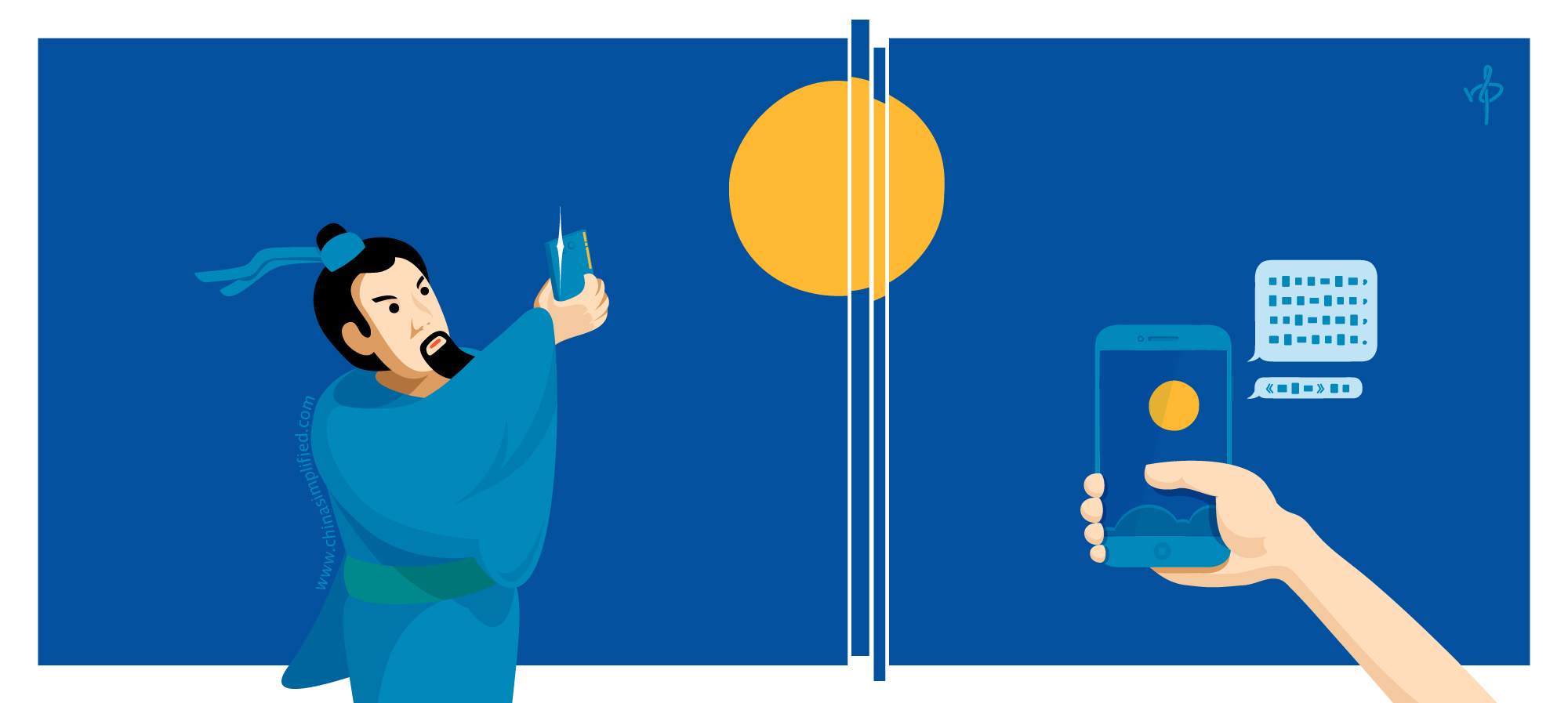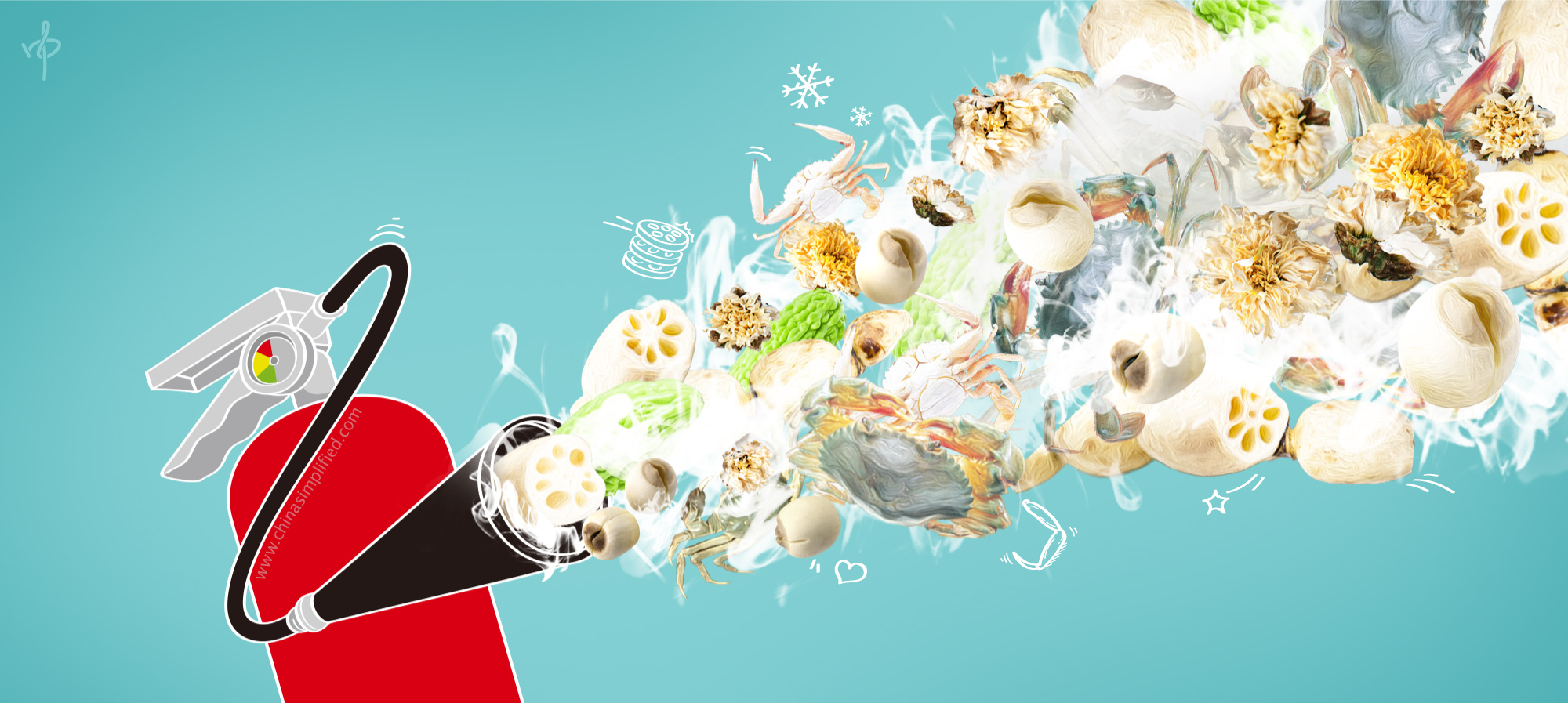The modern Mid-Autumn Festival has, to some observers, become yet another example of our world’s rampant materialism, in which the act of gifting an expensive box – with all its inherent social pressures and expectations – begins to overshadow any sincere sentiments prompting the gift itself and render its conspicuously overwrapped, less-often-consumed contents nearly irrelevant, leaving us all to wonder how we ended up so far removed from our ancestors’ original Mid-Autumn traditions.
It’s high time for us to check out the ever-changing world of mooncakes 月饼 yuèbǐng and munch on some of its tastier trivia.
What? No mooncakes?
A Mid-Autumn Festival 中秋节 Zhōngqiū jié once brought to mind heartwarming images of spectacular golden moons, abundant harvests and peaceful village gatherings among family and friends.
The term “Mid-Autumn” first appeared in the Rites of Zhou around 200BCE, recorded as a seasonal marking in the etiquette book. During the Sui-Tang era of 581-907CE, Mid-Autumn festivities emerged as lunar worship and a celebration of the fullest moon of the year. The first official mention of “mooncakes” came much later by the Song Poet, Su Shi 苏轼 Sūshì, who wrote: “小饼如嚼月,中有酥和饴” Xiǎo bǐng rú jué yuè, zhōng yǒu sū hé yí (“The little cake bites like the moon, filled inside with lard and sweetness”). So in a way, a Mid-Autumn celebration without mooncakes is not a betrayal, rather, a hearkening to the origins of the festival.
But let’s not get too crazy here — nobody should have to stop eating mooncakes to feel the warmth of tradition. We can have our (moon)cake and eat it too.
An infinity of flavors
Beyond the realm of the five basic varieties (Cantonese, Suzhou, Beijing, Chaoshan and Ningbo) which are well-documented online, lie a myriad of mooncake tastes ranging from highly creative to downright decadent, as businesses compete to cash in on the RMB 16 billion (USD 2.5 billion) Greater China mooncake market.
Among famous brands, Haagen-Dazs offers a box of eight handcrafted chocolate-covered ice-cream mooncakes. Not chocolaty enough? Try Godiva’s exquisite set featuring Grapefruit Black Tea Crunch, Goji Berry Black Tea, Mandarin Black Tea and Mango Green Tea mooncakes. Not to be outdone, Starbucks mixes the sweet and savory with flavors such as Cranberry Macadamia with Yoghurt Truffle, Camembert & Smoked Cheddar with Parmesan Truffle, and White Chocolate Crisp with Milk Chocolate Truffle, calling them a “modern twist to a classic tradition.”
Expensive mooncakes are making a comeback in 2015, according to SCMP. Luxury mooncake bundles containing birds nest, abalone, tea leaves, sausages and wine have been spotted in several high-end Beijing hotels, with some wealthy customers casting aside concerns of extravagance to purchase bespoke hampers matching their personal requirements.
Chef Louis-Antoine Giroud enters unchartered territory with aplomb colliding a round French pastry with Macaron de Lyon to create his Mooncarons, an East-meets-West invention providing “a novel gastronomic experience”. Meanwhile, Hong Kong’s Codekey Cookies raises awareness of the visually impaired with their handmade mooncakes inscribed with the character “dim” which means braille in Cantonese.
The mooncake options are endless – sweet, salty, spicy, meaty, vegetarian, low fat and extra yolky – basically anything that you would put in your mouth, and even some things you wouldn’t. In recent years, certain individuals were shocked and appalled to discover the mooncakes contained jewelry, cash, watches, even house keys.
A discouraging amount of waste
Despite the myriad of tasty mooncake options, the purchase decision is more often than not made based on the packaging and presentation. A stylish box with fancy wrapping means big face, according to the prevailing logic. Nobody eats the box, however, so one unintended result of our efforts to impress is an astonishing amount of waste. In 2009, China produced 40 million tons of waste from discarded packaging material, accounting for a third of the total weight of the country’s solid waste.
Surveys show that most Chinese care about green issues and welcome efforts to control waste. Laws have been passed to limit the cost of mooncake packaging as a percent of the total value, which some businesses then skirt by choosing more exotic ingredients (black truffle, caviar or foie gras mooncakes anyone?) so their expensive packaging doesn’t run afoul of regulations.
Beyond the issue of package waste, a ridiculous number of mooncakes themselves get thrown in the trash. According to a 2014 Green Power environmental survey, an estimated 1.5 million mooncakes in Hong Kong alone ended up as garbage. Translating all our good intentions into enforceable regulations and a reduction in overall waste remains problematic.
Mid-Autumn gifting – thinking outside the box!
Here are three considerations to help you gift and consume with greater awareness:
- Choose the right mooncakes:
Give mooncakes people are more likely to eat, i.e. classic flavors for traditionalists, innovative flavors for modernists. Select reduced sugar and other healthy options where possible. One of the more popular office sharing methods is to slice a mooncake into eight lucky pieces and serve with a strong pot of tea, which provides the added benefit of flushing along the fat or sweetness. And with a 7cm mooncake packing in 700-1000 calories (roughly the same as a plate of fish & chips) it’s no wonder everyone’s happy to share. - Reduce your packaging waste:
Look for eco-friendly options, or consider gift certificates to allow recipients to select their favorite mooncake or other preferred food product. When you receive expensive boxes, you might want to keep and reuse them next year with fresh mooncakes. - Create a personalized gift:
Be bold and save money! Resist buying more stuff that will end up building new mountains of trash. Unless it’s a formal gift to impress someone, you might select a more practical, non-food gift to show your affection. For example, there are mooncake cooking courses available to attend or gift to others. The possibilities are endless. After all, isn’t it the thought that counts? Or go “all in” and demonstrate your 环保 huánbǎo (environmental protection) consciousness with the traditional-meets-modern expression of an authentic Mid-Autumn poem sent via your cellphone:
中秋月
(宋)苏轼
暮云收尽溢清寒,
银汉无声转玉盘,
此生此夜不长好,
明月明年何处看。
Zhōngqiū yuè
(sòng) sūshì
mù yún shōu jǐn yì qīnghán,
yínhàn wúshēng zhuǎn yù pán,
cǐshēng cǐ yè bù cháng hǎo,
míngyuè míngnián hé chù kàn.
Mid-Autumn Moon
(Song Dynasty) Su Shi
Night clouds clear and refreshing coldness prevails,
In a Milky Way sky quietly floats the jade disc,
This life and this night won’t last forever,
Where can we find such a moon in the coming year?
Worldwide implications
Westerners also recognize how traditional celebrations such as Christmas can be hijacked by commercialism, with all this gifted stuff, after the initial excitement phase, becoming unused clutter in our homes. These material life challenges are not new; they span borders and cultures, affecting us all.
So why not use this year’s Mid-Autumn Festival as your opportunity to reconnect with the holiday’s original spirit, while gifting – mooncakes or otherwise – with a newfound awareness?
Perhaps one day, in the not-too-distant future, our “big face” gifts will be the ones which connect people without damaging the planet.
See also: Mooncake Festival – Giving The Bitcoin You Can Eat










Hello! I was interested in reading about the origins of the Chinese Mid-Autumn Festival and about the main food of that holiday – the mooncake. I knew that there are many varieties of mooncakes but didn’t know that there are five main types which come from various regions in China. I was curious to read that luxury mooncakes, such as mooncakes with birds nest, are becoming a trend in China. From a marketing perspective, I agree that fancy packaging is a key element in driving product sales in China. Similar to chocolate, mooncakes are often bought as a gift which means the embellished package represents the status of the person presenting the gift.